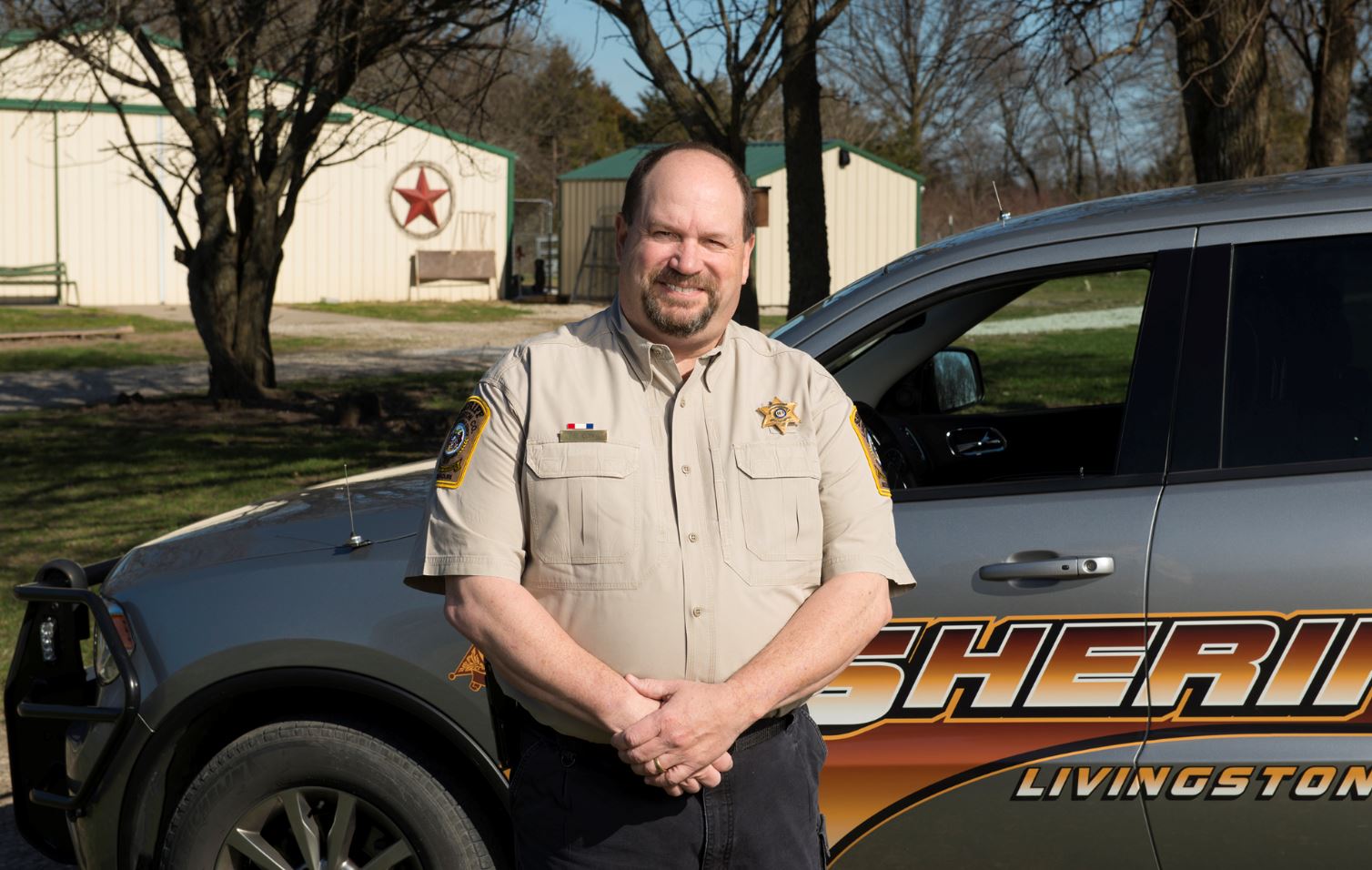Heart Pump is One Tool Cardiologist Used to Help Save Area Sheriff's Life

As the sheriff of Livingston County, Steve Cox was used to calamities happening … to someone else. The 52-year-old was seeking a fifth term in office when his own heart stopped beating on October 28, two weeks before the general elections.
Steve’s wife, Beth, was driving him to his doctor after he complained of chest pains when he went rigid and then slumped over. Beth made a police-chase worthy U-turn, called 911, and headed for Hedrick Medical Center in Chillicothe, a Saint Luke’s Health System regional hospital. On arrival, she hurried out of their van to get help, but before she could get back to Steve, her legs buckled and she dropped to the ground. It was from that vantage point that she watched EMS perform chest compressions on her husband while he lay on the parking lot pavement.
After restarting Steve’s heart and stabilizing him, the Hedrick staff acted fast and coordinated with Saint Luke’s Hospital of Kansas City to send him via Life Flight Eagle helicopter to the Saint Luke's Mid America Heart Institute, a nationally recognized treatment center for cardiac arrest.
Once there, Cardiologist Robert Tanenbaum, MD, told Beth, “Steve is critically ill, but he’s in the right place. We’ll do everything we can.” Fewer than five percent of people who suffer cardiac arrest outside a hospital survive.
“How will you know how much to put him through?” Beth asked.
“Steve will let us know,” Dr. Tanenbaum said. Steve’s tenacity would soon become legend.
Pump up the volume
In the catheterization laboratory, James Aaron Grantham, MD, an interventional cardiologist, performed a complete revascularization by snaking a stent through Steve’s arteries to open the blockage that had led to the cardiac arrest. During the procedure, Steve’s heart stopped again.
Dr. Tanenbaum told Beth that her husband might not survive the night, and if he did, he might have significant brain damage from lack of oxygen.
“Although Dr. Tanenbaum prepared me for the worst, everyone in the hospital did their best to keep him alive,” Beth says. And the arsenal of weapons was extensive.
Steve’s heart couldn’t pump enough oxygen, so Dr. Grantham installed an Impella® heart pump through an artery.
“This device is just one of the many tools we use to keep more cardiac arrest patients alive than any other hospital in the metro area,” said cardiologist Anthony Hart, MD, who heads the cardiogenic shock program. “We pull out all the stops.”
Saint Luke’s is one of only a few hospitals that can provide every treatment available to treat cardiac arrest from hypothermia to heart-lung bypass. The pumping device bought Steve time for the staff to treat other complications.
He required extensive CPR in Saint Luke's Mid America Heart Institute’s cath lab and then again in the ICU where Dr. Tanenbaum and his team saved Steve’s life for the third time. In total, Steve’s heart would stop four times, and the lack of oxygen to his brain led to three strokes as well as kidney and liver failure.
At each juncture, the doctors had a procedure or treatment to keep Steve alive. Even Beth helped where she could by tracking tests and lab results, and keeping doctors up to date on his lactate levels as they entered his room during rounds. “Steve’s was 18,” she says. Normal levels are less than two. At four or more, the mortality rate is more than 50 percent.
When a nurse testing Steve’s sedation levels couldn’t get a response, Beth took his hand and told him, “Steve, squeeze my hand if you love me.” He squeezed it twice. On another day, she got a response from him when she said, “If you die, I’m going to paint your toenails pink.”
“The doctors and nurses treated me like a member of the team,” Beth says. “We became like a family.”
The staff also protected Steve’s privacy when word got out that the sheriff was gravely ill and couldn’t perform his duties—a rumor hard to dispute as he was in a coma.
While the action whirled around Steve, he later reported that long-deceased relatives visited him in his dreams. His favorite grandmother Eva told him, “Stevie, it’s not your time. I’m going to pull some strings to make sure you are okay.”
After two weeks in intensive care, he awoke and heard his wife call him “Stevie,” something she’d never done before. “Why did you call me that?” he asked. She had no idea. Then he started asking about his family, police business, and his re-election campaign. His clarity stunned all present.
“He’s the sickest person I’ve ever treated to make a full recovery,” says cardiologist Iain McGhie, MD.
Keeping the faith
Steve is back doing the activities he loves—fishing, hunting, and wise-cracking. He responded to an inquiry about how he feels with, “Well, I’m glad I don’t have pink toenails.” He later asked a judge, “Are Beth and I still married? Our vows were only until death do us part, and I died on October 28.”
The experience has deepened his faith and made him more grateful. “Every time I hear a Life Flight helicopter, I say a prayer,” he says. He feels indebted to the doctors and nurses throughout Saint Luke’s, to his staff who assumed his duties while he recovered, and even to the citizens of Livingston County who had faith to re-elect him sheriff for a fifth term … by a healthy margin.
Learn more about Sgt. Sheriff Cox's life-saving chronic total occlusion treatment and our entire comprehensive program for advanced heart care at Saint Luke's Mid America Heart Institute.